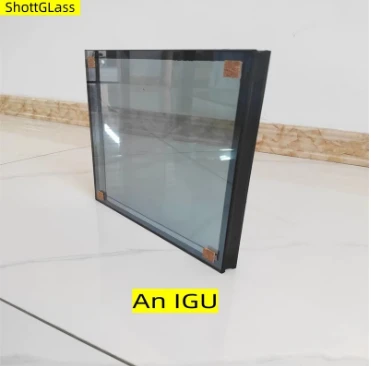Dec . 15, 2024 01:05 Back to list
Specifications for Tempered Laminated Glass in Construction and Design Applications
Understanding Tempered Laminated Glass Specifications
Tempered laminated glass is widely recognized for its strength, safety, and versatility in various architectural and design applications. Understanding its specifications is essential for builders, architects, and designers looking to utilize this material effectively. This article delves into the details of tempered laminated glass, covering its production process, properties, uses, and key specifications.
Production Process
Tempered laminated glass combines two significant manufacturing processes tempering and lamination. The process begins with the selection of high-quality glass sheets, which are then subjected to a heating and rapid cooling process called tempering. This process increases the glass's strength, making it approximately five to six times stronger than untreated glass. Tempered glass can withstand high impact and thermal stresses, making it ideal for various applications.
The laminated aspect involves sandwiching a layer of polyvinyl butyral (PVB) or ethylene-vinyl acetate (EVA) between two sheets of tempered glass. The lamination process is conducted under heat and pressure, ensuring a solid bond between the glass and the interlayer. This interlayer not only enhances safety by preventing the glass from shattering upon impact but also provides additional benefits, such as sound insulation, UV filtering, and privacy.
Key Properties
1. Safety One of the primary advantages of tempered laminated glass is its safety features. In the event of breakage, the PVB or EVA interlayer holds the glass fragments together, reducing the risk of injury compared to regular glass, which shatters into sharp shards.
2. Strength and Durability The tempering process significantly increases the glass's resistance to thermal shock and impact, ensuring it can withstand harsh environmental conditions.
3. UV Protection The interlayer used in laminated glass can block up to 99% of harmful UV rays, protecting both interiors and occupants from potential harm. This property also helps in preventing the fading of furnishings and decor.
tempered laminated glass specification

5. Aesthetic Versatility Available in various colors, finishes, and thicknesses, tempered laminated glass can be tailored to fit any architectural design aesthetic, enhancing both functionality and beauty.
Specifications to Consider
When selecting tempered laminated glass for a project, there are several specifications to consider
- Thickness Typically, tempered laminated glass comes in various thicknesses ranging from 6mm to 25mm. The thickness can influence both strength and insulation properties.
- Layering Configuration The number of layers and the type of interlayer (PVB or EVA) can affect performance characteristics such as sound insulation and UV protection. Multiplying layers increases safety and insulation properties.
- Finishes Glass can be treated with different surface finishes, including clear, tinted, or reflective coatings. These finishes can enhance aesthetic appeal and energy efficiency.
- Thermal Performance Ratings Check for thermal performance ratings, such as the U-factor and SHGC (Solar Heat Gain Coefficient), to ensure the glass meets energy-efficient building standards.
- Compliance Standards Ensure that the tempered laminated glass complies with relevant safety and performance standards, such as ANSI Z97.1, CPSC 16 CFR 1201, and others depending on regional regulations.
Conclusion
Tempered laminated glass is an excellent choice for a wide array of applications, combining safety, durability, and aesthetic versatility. By understanding its specifications and properties, architects and builders can make informed decisions that enhance the safety and comfort of their projects. As technology advances and new standards emerge, the continued evolution of tempered laminated glass will play a fundamental role in the future of building design and construction.
-
Safety and Style with Premium Laminated Glass Solutions
NewsJun.24,2025
-
Reinvents Security with Premium Wired Glass
NewsJun.24,2025
-
Premium Float Glass Line for Modern Architecture
NewsJun.24,2025
-
Low Emissivity Glass for Energy-Efficient Architecture
NewsJun.24,2025
-
High-Performance Insulated Glass Solutions for Modern Architecture
NewsJun.24,2025
-
Elevates Interior Style with Premium Silver Mirror
NewsJun.24,2025
Related PRODUCTS














